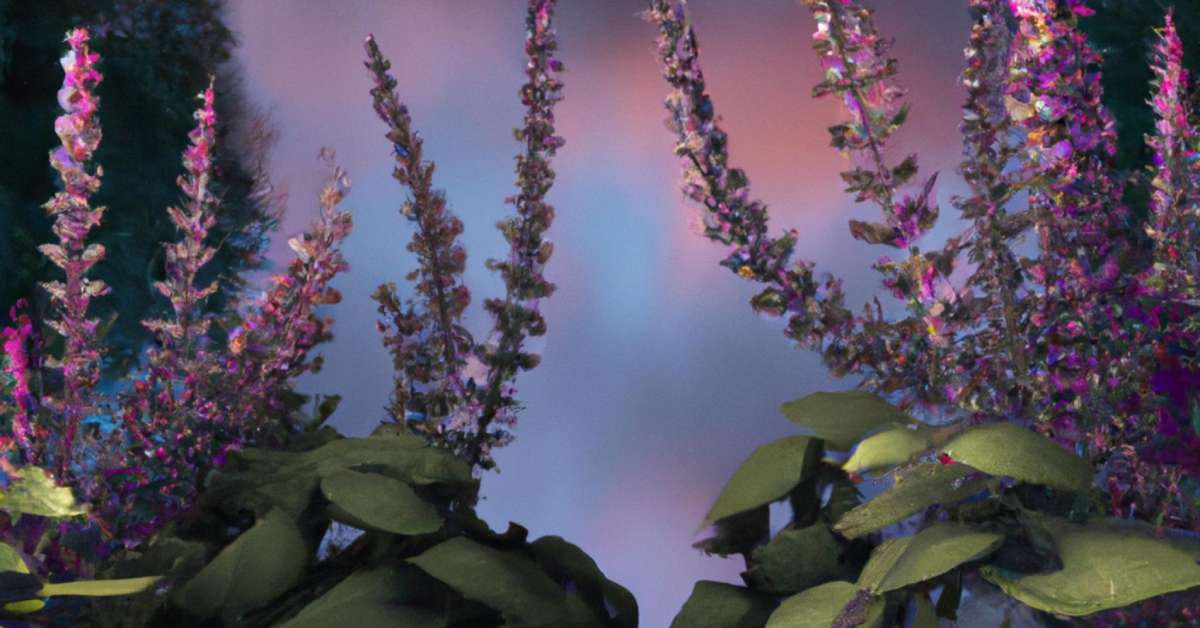The Short Answer:
Salvia divinorum is found primarily in the Sierra Mazateca region of Mexico and occasionally in other parts of Mexico and a few cultivated environments worldwide.
The Long Answer:
Salvia divinorum, often referred to simply as “salvia,” is a plant that has piqued the curiosity of many due to its unique and powerful psychoactive properties. This fascinating herb is not your typical garden variety, and its origins are shrouded in mystery. In this article, we’ll embark on a journey to uncover the geographical origins of Salvia divinorum, explore its natural habitat, and delve into the cultural significance of this enigmatic plant.
The Enigmatic Salvia Divinorum
Salvia divinorum, native to Mexico, is a psychoactive plant that has been used for centuries by indigenous peoples in spiritual and shamanic rituals. Its leaves contain the active compound salvinorin A, which is responsible for the plant’s potent hallucinogenic effects when ingested, smoked, or vaporized. Despite its rich history in traditional practices, Salvia divinorum remains relatively unknown to the general public, and its cultivation and use are subject to legal restrictions in many parts of the world.

So, where exactly can you find this intriguing plant and its rich cultural heritage? Let’s embark on a journey of discovery.
- The Native Habitat: Mexico
Salvia divinorum is indigenous to a specific region in Mexico, where it thrives in the wild. It is primarily found in the Sierra Mazateca, a mountainous area in the eastern part of the Mexican state of Oaxaca. The Sierra Mazateca, with its lush forests and misty landscapes, provides the perfect backdrop for the growth of Salvia divinorum.
The plant’s natural habitat is characterized by high humidity, ample rainfall, and rich, well-drained soil, all of which contribute to its robust growth. It prefers the sheltered understory of the forest, where it can thrive in semi-shaded conditions.
- Botanical Characteristics
Before delving deeper into the geographical distribution of Salvia divinorum, let’s take a moment to understand its botanical characteristics. This will help us appreciate how it has adapted to its native habitat.
Salvia divinorum belongs to the mint family, Lamiaceae, which includes various aromatic herbs like basil, rosemary, and thyme. Unlike its more common relatives, Salvia divinorum is a leafy perennial shrub that can reach a height of up to three feet. Its leaves are large, green, and heart-shaped, making it visually distinct from other Salvia species.
One of the most remarkable features of Salvia divinorum is its lack of viable seeds. Unlike many plants that reproduce through seeds, this plant primarily spreads through vegetative propagation, making it challenging to find in the wild outside of its native habitat.
- The Geographic Range
While Salvia divinorum is indigenous to the Sierra Mazateca, its natural range extends beyond this region to some neighboring areas in Oaxaca and possibly other parts of Mexico. However, the plant is not widely distributed across the country and is typically confined to specific microenvironments within its range.
Efforts to cultivate Salvia divinorum outside of its native habitat have met with limited success, primarily due to its specific ecological requirements and the challenges associated with its seedless reproduction. This has led to its continued rarity outside of its natural range.
- Cultivation Beyond Mexico
Although Salvia divinorum’s native habitat remains its primary stronghold, enthusiasts and botanical researchers have attempted to cultivate the plant in controlled environments beyond Mexico. This has led to limited success in regions with similar climate conditions, such as certain parts of the United States, Central America, and Europe.
In the United States, for instance, Salvia divinorum is grown as a decorative plant in some gardens, although its psychoactive properties are a subject of concern for legislators in several states, leading to its prohibition in certain areas.
- Cultural Significance
Salvia divinorum has a long history of cultural and spiritual significance among indigenous peoples in Mexico, particularly the Mazatec people. For centuries, it has been used by shamans and curanderos (healers) in divinatory and healing rituals.
In these traditional practices, Salvia divinorum is often referred to as “Ska María Pastora” or “La María.” The Mazatec shamans would prepare the leaves of the plant by crushing them into a paste or chewing them to induce visionary experiences. These experiences were believed to provide insights, healing, and a connection to the spirit world.
- Modern Usage and Legal Status
In the modern world, Salvia divinorum has gained attention for its intense and short-lived hallucinogenic effects. It has become a subject of interest for researchers exploring the nature of altered states of consciousness.
However, its legal status varies widely across the globe. In many countries, including several U.S. states, Salvia divinorum is either restricted or outright prohibited due to concerns about its safety and potential for abuse. Some areas, though, have chosen to regulate it rather than criminalize it.
- Challenges in Preserving the Plant
Preserving Salvia divinorum is a challenge due to its unique reproductive biology and the legal restrictions imposed on its cultivation and use in many regions. Efforts to protect the plant’s genetic diversity and its cultural heritage are ongoing, but they face significant hurdles.
Conservationists and ethnobotanists work to study and document Salvia divinorum in its native habitat while respecting the traditional knowledge and practices of the Mazatec people. These efforts aim to strike a balance between preserving the plant and its cultural significance and addressing the concerns related to its potential misuse.
Conclusion
Salvia divinorum, with its origins in the misty mountains of Mexico, is a plant shrouded in mystery and cultural significance. While it remains rare outside of its native habitat due to its unique reproductive biology and legal restrictions, it continues to captivate the imagination of those who seek to understand its psychoactive properties and the spiritual traditions that have surrounded it for centuries.
The story of Salvia divinorum is a testament to the intricate relationship between plants, culture, and human curiosity. As we continue to explore and study this enigmatic plant, we must do so with respect for both its natural habitat and the traditions that have revered it for generations.



